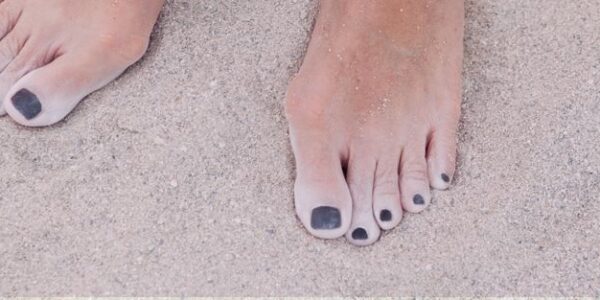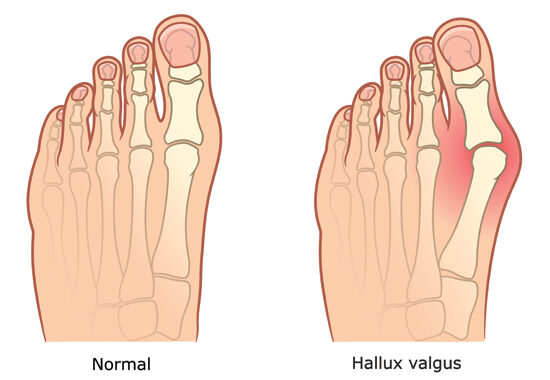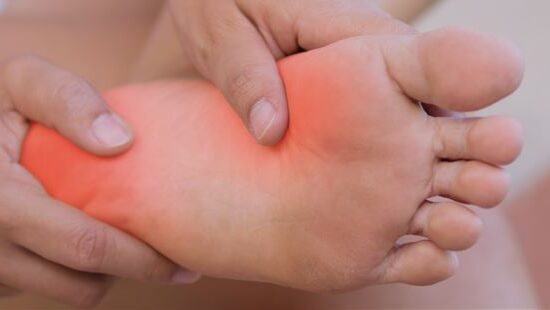Hallux valgus, commonly known as “bunion foot”, is a typical deformity of the big toe that can cause pain and discomfort when walking. Typically, a bunion takes the form of a bump on the side of the foot.
In this article, we look at the causes, symptoms and treatments for effective relief of bunion.
What is Bunion (hallux valgus) ?
Bunion is a progressive deviation of the big toe towards the other toes, causing a bony bump on the side of the foot at the toe. This deformity often leads to pain, inflammation and difficulty putting on shoes.
Hallux Valgus corresponds to a lateral deviation of the metatarsophalangeal joint, accompanied by a widening of the base of the big toe. It can evolve slowly, aggravating discomfort and modifying foot biomechanics. Hallux valgus is more common in women, often linked to the wearing of narrow shoes or to hereditary factors.
Causes of bunion foot
Bunion can occur for a number of reasons. Genetic factors play an important role, but wearing unsuitable footwear is often one of the main reasons. Shoes that are too narrow, with high heels or pointed toes exert excessive pressure on the forefoot, encouraging the big toe to deviate and encourage the bunions apparition.
Certain biomechanical disorders can cause foot instability, such as flat foot or hyperpronation, which can alter load distribution, increasing the risk of hallux valgus.
Age and certain medical conditions can aggravate or promote the development of hallux valgus, notably osteoarthritis, inflammatory rheumatism and muscular imbalances in the foot.












